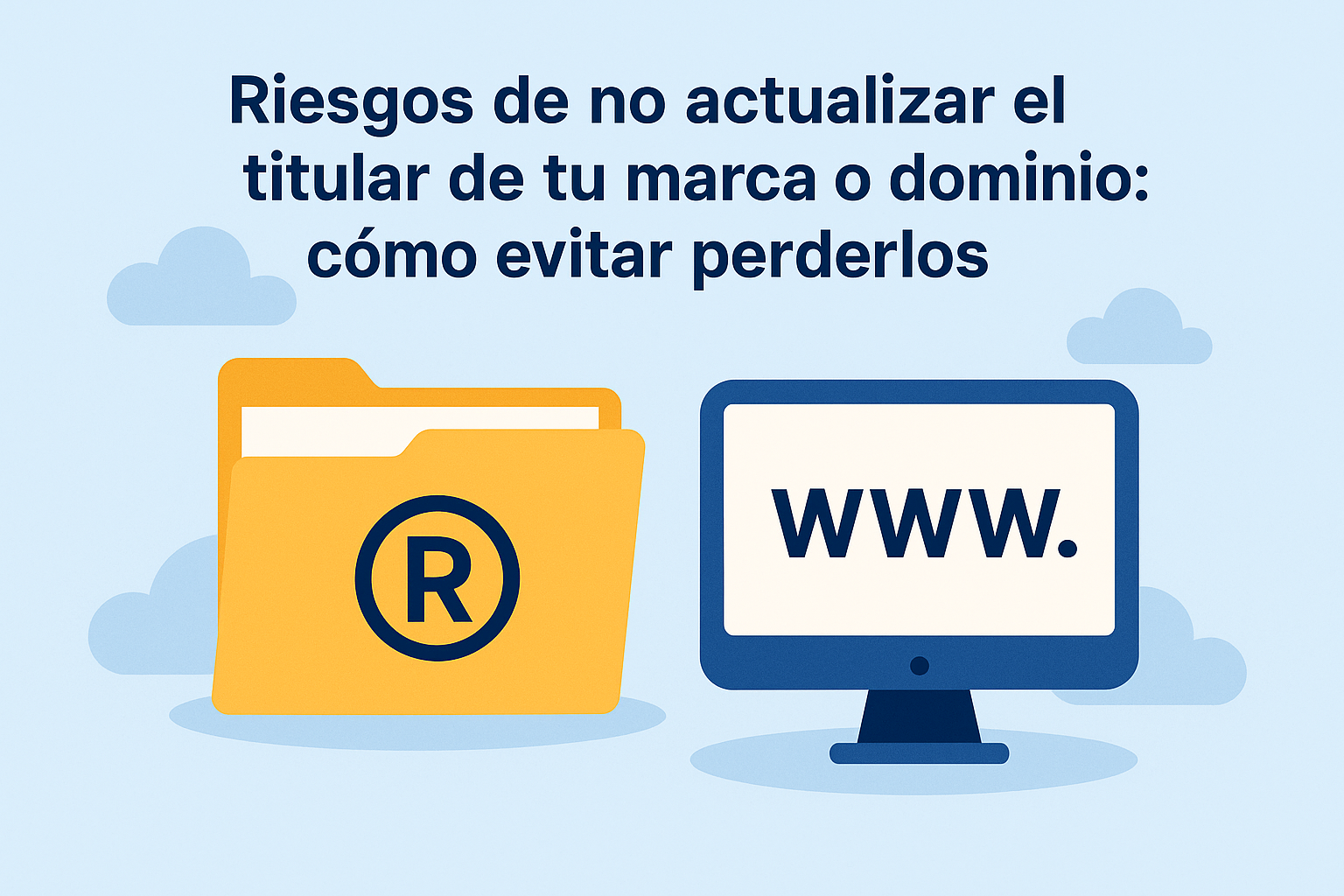
Why it is important to keep the headline of your records up to date
In the digital world, names matter. Your brand and your web domain are as valuable assets as a patent or a bank account, but they are often registered in the name of a person or partner who, over time, is no longer linked to the project.
Keeping the holder's data up to date is not a minor detail.
A simple change of email address, the departure of a founder or even a death can block such basic procedures as renewing a domain name or defending a trademark against infringement.
Real example:
A family business registered its main domain in the name of the founder. After his death, no one could access the registered email, and the domain expired. It lost it to a competitor who bought it the next day.
Table of Contents
The hidden problem: when the headline disappears
When the owner disappears -whether a natural or legal person-, the rights over the records are not automatically transferred.
Industrial property offices and domain name registrars require proof of succession, cession or legal continuity. before allowing any modification.
This means that if the name of the registrant does not match the actual entity using the trademark or domain name, the business may be paralyzed:
You will not be able to renew the domain.
You will not be able to transfer it or update DNS.
You will not be able to claim if someone uses it improperly.
You will not be able to register a linked trademark if it is already blocked by prior ownership.
And the most serious thing: the system does not distinguish between "unavailable" and "deceased". For the registrar, there is simply no valid headline.
What to do if the owner of a trademark or domain name is no longer available
The process of recovery or change of ownership varies according to the type of asset:
For trademarks and patents
File a change of ownership application with the industrial property office (such as the SPTO or the SIC).
Provide legal documents proving the transfer or inheritance (will, deed or contract).
Pay the fees and wait for validation.
For web domains
Contact the registrar where the domain was acquired.
Prove the succession or transfer with notarized or corporate documents.
Update the contact e-mails (owner, administrative and technical).
Configure two-factor authentication to prevent future lockouts.
Professional advice:
If the email associated with the domain is inactive, it is best to request an alternative verification with the provider or, as a last resort, to initiate a recovery procedure with documentary proof.
Common mistakes that can cause you to lose your rights
| Frequent error | Consequence |
|---|---|
| Registering the trademark or domain name in the name of an employee or partner | Loss of control when that person disengages. |
| Use a personal email as a domain contact | Inability to access if the account is lost. |
| Failure to renew registrar access credentials | Total management block. |
| Failure to leave instructions in case of death | Unresolved digital inheritance risk. |
| Not registering the trademark before using it publicly | Possible usurpation by third parties. |
How to prevent conflicts and maintain control
Centralize all your records under the legal name of your company, not natural persons.
Appoint an internal manager (this can be your IT or legal department).
Updates technical and administrative contacts each year.
Stores certificates, confirmation emails and invoices in a shared folder with restricted access.
Includes a digital continuity clause in your bylaws or partnership agreement.
Review your domains periodically: date of renewal, holder and contacts.
⚖️ Key data: If there is no legal proof of the change of ownership, the domain or trademark still belongs to the original registrant, even if it is no longer related to your business.
Frequently Asked Questions
What happens if a domain owner dies?
The heirs must legally prove the succession before the registrar. If they fail to do so in time, the domain may expire and be released.
Can I change the owner of a registered trademark?
Yes, provided that the transfer is evidenced by contract, inheritance or business merger.
What is the difference between the technical contact and the incumbent?
The owner is the legal owner of the domain; the technical contact only manages configurations. If the owner disappears, the technician cannot transfer or renew.
Is there a deadline to claim an expired domain?
Yes, there is usually a grace period and a redemption period, but costs increase and recovery is not always guaranteed.
What does an expert recommend?
Review your records annually, keep all information under corporate control and do not leave these assets in the hands of third parties without legal backing.
Conclusion
Losing a trademark or domain name due to an administrative oversight is more common than it seems.
The real risk is not in the competition, but rather in the not having your digital rights under control.
Reviewing who is listed as the owner, updating information and planning digital successions are simple steps that can save you from litigation, loss of reputation and unnecessary costs.
In summary:
Protect your brand and domain today as you would protect your company.
Digital assets are the heart of your online identity, and they deserve to be managed as seriously as your finances.






